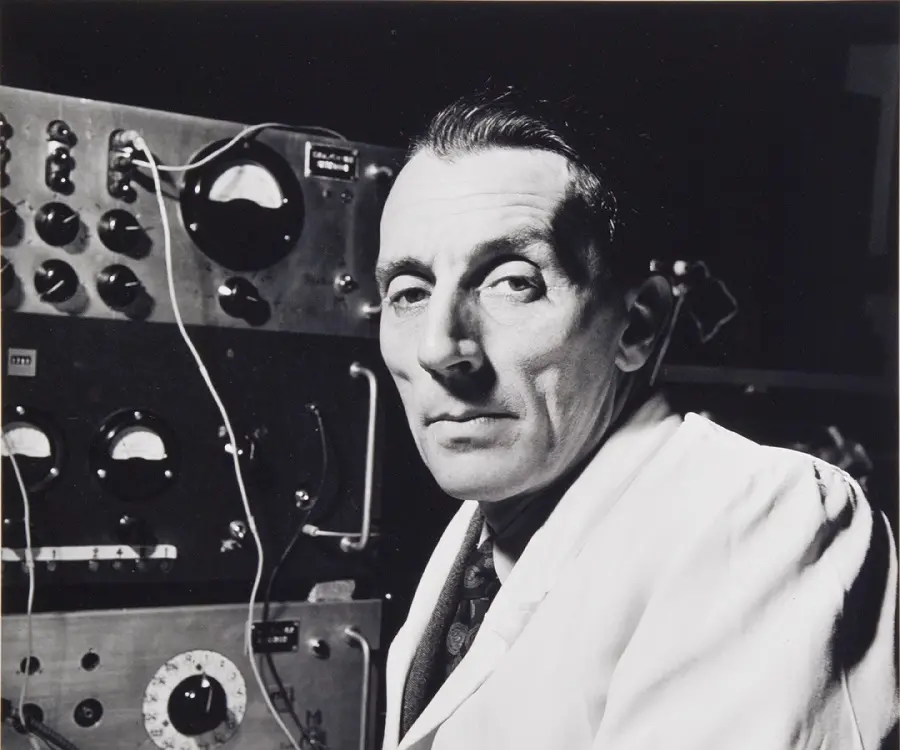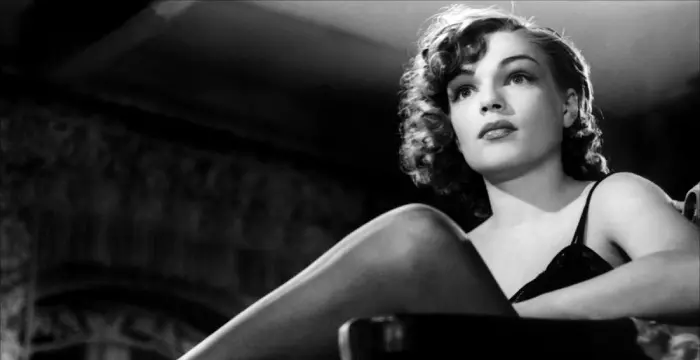
Frédéric Joliot-Curie - Scientists, Facts and Childhood
Frédéric Joliot-Curie's Personal Details
Frederic Joliot Curie was a French physicist and Nobel laureate who along with his wife discovered artificial radioisotope
| Information | Detail |
|---|---|
| Birthday | March 19, 1900 |
| Died on | August 14, 1958 |
| Nationality | French |
| Famous | Scientists, Physicists |
| Spouses | Irène Joliot-Curie |
| Known as | Frederic Joliot-Curie |
| Childrens | Hélène Langevin-Joliot, Pierre Joliot |
| Universities |
|
| Birth Place | Paris |
| Religion | Atheism |
| Gender | Male |
| Sun Sign | Pisces |
| Born in | Paris |
| Famous as | Physicist |
| Died at Age | 58 |
// Famous Physicists
Henry Cavendish
Henry Cavendish was a theoretical chemist and physicist, renowned for discovery of hydrogen and calculation of the mass of earth. To know more about his childhood, profile, timeline and career read on
Walter Kohn
Nobel Laureate Walter Kohn was an Austrian-born American theoretical chemist and physicist. Check out this biography to know about his childhood, life, achievements, works & timeline.
Nikola Tesla
Nikola Tesla was a Serbian-American inventor, best known for his development of alternating current electrical systems. This biography of Nikola Tesla provides detailed information about his childhood, life, achievements, works & timeline.
Frédéric Joliot-Curie's photo
Who is Frédéric Joliot-Curie?
Frederic Joliot Curie was a French physicist and Nobel laureate who along with his wife Irene Joliot-Curie is credited with the discovery of artificial radioactivity. He was born as Jean Frederic Joliot in Paris, France to a merchant father. As a child, Frederic was more inclined towards sports. However, fate had something else in store for him. After completing his education and service in the military, Joliot turned to take up a research scholarship. On the recommendation of Paul Langevin, he was appointed as an assistant to Marie Curie. This appointment transformed his life, professionally and personally. He fell in love and married Marie Curie’s daughter Irene Curie. The two of them combined together to research and explore the unknown facets of science. While researching on the structure of atoms and later bombardment of stable nuclides, the two zeroed on artificial radioisotopes. Their scientific research led to the synthesis of new radioactive elements. It was a major breakthrough in the field of chemistry and also won them a Nobel Prize in Chemistry in 1935. Second World War and post war administrative duties stalled Joliot-Curie’s research work. Towards the end of his career, he held several important positions including France's first High Commissioner for Atomic Energy, director of French National Centre for Scientific Research and Chair of Nuclear Physics.
// Famous Scientists
Juliane Koepcke
Juliane Koepcke is a German-Peruvian biologist, who was the lone survivor among the 92 passengers and crew of the ill-fated LANSA Flight 508 that crashed in the Peruvian rainforest on 24 December 1971. Know more about her life in this biography.
Henry Cavendish
Henry Cavendish was a theoretical chemist and physicist, renowned for discovery of hydrogen and calculation of the mass of earth. To know more about his childhood, profile, timeline and career read on
Konstantin Tsiolkovsky
Konstantin Tsiolkovsky was a Russian rocket scientist and a pioneer of astronautics. This biography provides detailed information about his childhood, family, personal life, career, achievements, etc.
Childhood & Early Life
Jean Frederic Joliot was born on March 19, 1900, to Henri Joliot and Emilie Roederer in Paris, France. His father was a merchant by profession.
Early on, Joliot was more inclined towards sports than academics. He studied at the Lycee Lakanal boarding school but later on due to financial constraints he opted out of the boarding school and enrolled at the Lavoisier municipal school.
After passing from school, he entered École de Physique et de Chimie Industrielle and graduated with a first rank degree in engineering
Career
After his stint in military, Frederic Joliot Curie accepted a research scholarship that helped him secure the position of an assistant to Marie Curie at the Radium Institute in 1925. During this time, he fell in love and eventually married Marie Curie’s daughter, Irene Curie. The two adopted the surname Joliot-Curie.
At the insistence of Marie Curie, Joliot-Curie secured his second baccalaureate. In 1927, he obtained his license es sciences. He studied further and in 1930, obtained a doctorate degree in science. The topic of his thesis was electrochemistry of radio elements. Meanwhile, he also taught at the École d’Électricité Industrielle Charliat.
During this time, the husband-wife duo carried out extensive research on the structure of the atom. Their work on the projection of the nuclei was instrumental in the discovery of neutron by Chadwick and of positron by Anderson; both in the in year 1932
In 1934, Joliot-Curie and Irene Joliot-Curie struck the magnum opus of their career with the discovery of artificial radioactivity. The discovery was a milestone in science. For the same, they bombarded boron, aluminium, and magnesium with alpha particles. On bombardment, they obtained radioactive isotopes of elements not ordinarily radioactive, namely, 13 of nitrogen, 30 of phosphorus, 27 of silicon and 28 of aluminium. Since these elements were not found naturally, they decomposed easily emitting positive and negative electrons.
It was after the discovery of the artificially produced isotopes that the possibility of using them to follow chemical changes and physiological processes were realized. The isotopes thus discovered were used variedly - the absorption of radioiodine by the thyroid gland was detected, and the course of radiophosphorus was traced in the metabolism of the organism.
In 1935, for their discovery of artificial radioactivity, Frederic and Irene Joliot-Curie were awarded Nobel Prize for chemistry. It was due to their discovery that the existence of short-lived radioisotopes was discovered.
Meanwhile, amidst his scientific research and study, Joliot who possessed an interest in social questions, joined the Socialist Party, the S.F.I.O., in 1934 and later the League for the Rights of Man in 1936.
In 1937, Joliot-Curie gave up his position at the Radium Institute to take up professorship at the College de France. During this time, he worked on chain reactions. He built the first cyclotron in Western Europe
He successfully constructed a nuclear reactor that used nuclear fission to generate energy using uranium and heavy water. Following this, he discovered physical roof of the phenomenon. Between 1939 and 1940, he took out five patents.
In 1940, during World War II, Joliot-Curie’s research work dampened. At the time of Nazi invasion, Joliot smuggled his research material to England with the help of Hans von Halban, Moshe Feldenkrais and Lew Kowarski.
At the time of French occupation, he actively took part in the French Resistance. He served as the President of the National Front and later formed the French Communist Party.
Post War, in 1945, Joliot-Curie served as the Director of the Centre National de la Recherche Scietifuque (French National Centre for Scientific Research) and later as the French first High Commissioner for Atomic Energy. Two years later, he oversaw the construction of the first French atomic reactor. In 1950, he was relieved off his political duties. He retained professorship at College de France.
In 1955, he was one of the eleven signatories to the Russell-Einstein Manifesto. Following the death of his wife Irene Joliot-Curie in 1956, he took over her position as Chair of Nuclear Physics at the Sorbonne.
Towards the end of his career, Frederic Joliot-Curie administered the creation of a centre for nuclear physics at Orsay.
Major Works
Joliot-Curie’s most important contribution came with his fellow researcher and wife, Irene Curie. Together, the two discovered artificial radioactivity which led to the discovery of short-lived radioisotopes. The discovery was a breakthrough moment in the field of chemistry as it led to the formation of radioactive isotopes of elements that were not found naturally. These isotopes decomposed easily emitting positive and negative electrons.
Awards & Achievements
In 1935, along with his wife, he was awarded Nobel Prize in Chemistry for their discovery of artificial radioactivity.
He served as the member of the French Academy of Science and Academy of Medicine. He was also named Commander of the Legion of Honour. In 1946, he was elected as a Foreign member of the Royal Society.
In 1951, Joliot-Curie was awarded a Stalin Peace Prize for his work as the President of World Council of Peace.
Personal Life & Legacy
Frederick Joliot’s position of an assistant to Marie Curie in 1925 transformed both his private and professional life. He first met Curie’s daughter Irene Curie. The two hit it off instantly and following year, On October 4, 1926 tied the nuptials. Post marriage, they hyphenated their surname to Joliot-Curie.
In 1927, the couple was blessed with a daughter, Helena Langevin-Joliot who became a noted physicist and a son Pierre in 1932, who became a biologist.
He died on August 14, 1958, at the age of 58, in Paris, France
Posthumously, Joliot has a crater on the moon named after him. Furthermore, a street and a metro station in Sofia, Bulgaria are named after him. Other streets in countries that bear his name include Canada, Warsaw, Wroclaw, Poland, Poprad, Bucharest, North Montreal, Romania, Slovakia and so on.
The government of Romania issued a stamp commemorating the achievements by Frederic Joliot-Curie.
// Famous French peoples
Simone Signoret
Simone Signoret was a French actress who became the first French person to win an Academy Award. Check out this biography to know about her childhood, family life, achievements and other facts related to her life.
Jade Weber
Scroll down this bio to find out everything about French model Jade Weber. Be it fun facts, birthday, trivia or details of her personal and family life, you’ll find everything here.
Micheline Roquebrune
Micheline Roquebrune is a petite Moroccan-French painter best known as the third wife the legendary Scottish actor Sir Sean Connery. Check out this biography to know about her birthday, childhood, family life, achievements and fun facts about her.
Frédéric Joliot-Curie's awards
| Year | Name | Award |
|---|---|---|
Other | ||
| 0 | 1935 - Nobel Prize in Chemistry | |
| 0 | 1950 - Lenin Peace Prize | |
| 0 | 1947 - Hughes Medal | |
Frédéric Joliot-Curie biography timelines
- // 19th Mar 1900Jean Frederic Joliot was born on March 19, 1900, to Henri Joliot and Emilie Roederer in Paris, France. His father was a merchant by profession.
- // 1925After his stint in military, Frederic Joliot Curie accepted a research scholarship that helped him secure the position of an assistant to Marie Curie at the Radium Institute in 1925. During this time, he fell in love and eventually married Marie Curie’s daughter, Irene Curie. The two adopted the surname Joliot-Curie.
- // 1925 To 4th Oct 1926Frederick Joliot’s position of an assistant to Marie Curie in 1925 transformed both his private and professional life. He first met Curie’s daughter Irene Curie. The two hit it off instantly and following year, On October 4, 1926 tied the nuptials. Post marriage, they hyphenated their surname to Joliot-Curie.
- // 1927 To 1930At the insistence of Marie Curie, Joliot-Curie secured his second baccalaureate. In 1927, he obtained his license es sciences. He studied further and in 1930, obtained a doctorate degree in science. The topic of his thesis was electrochemistry of radio elements. Meanwhile, he also taught at the École d’Électricité Industrielle Charliat.
- // 1927 To 1932In 1927, the couple was blessed with a daughter, Helena Langevin-Joliot who became a noted physicist and a son Pierre in 1932, who became a biologist.
- // 1932During this time, the husband-wife duo carried out extensive research on the structure of the atom. Their work on the projection of the nuclei was instrumental in the discovery of neutron by Chadwick and of positron by Anderson; both in the in year 1932
- // 1934In 1934, Joliot-Curie and Irene Joliot-Curie struck the magnum opus of their career with the discovery of artificial radioactivity. The discovery was a milestone in science. For the same, they bombarded boron, aluminium, and magnesium with alpha particles. On bombardment, they obtained radioactive isotopes of elements not ordinarily radioactive, namely, 13 of nitrogen, 30 of phosphorus, 27 of silicon and 28 of aluminium. Since these elements were not found naturally, they decomposed easily emitting positive and negative electrons.
- // 1934 To 1936Meanwhile, amidst his scientific research and study, Joliot who possessed an interest in social questions, joined the Socialist Party, the S.F.I.O., in 1934 and later the League for the Rights of Man in 1936.
- // 1935In 1935, for their discovery of artificial radioactivity, Frederic and Irene Joliot-Curie were awarded Nobel Prize for chemistry. It was due to their discovery that the existence of short-lived radioisotopes was discovered.
- // 1935In 1935, along with his wife, he was awarded Nobel Prize in Chemistry for their discovery of artificial radioactivity.
- // 1937In 1937, Joliot-Curie gave up his position at the Radium Institute to take up professorship at the College de France. During this time, he worked on chain reactions. He built the first cyclotron in Western Europe
- // 1939 To 1940He successfully constructed a nuclear reactor that used nuclear fission to generate energy using uranium and heavy water. Following this, he discovered physical roof of the phenomenon. Between 1939 and 1940, he took out five patents.
- // 1940In 1940, during World War II, Joliot-Curie’s research work dampened. At the time of Nazi invasion, Joliot smuggled his research material to England with the help of Hans von Halban, Moshe Feldenkrais and Lew Kowarski.
- // 1945 To 1950Post War, in 1945, Joliot-Curie served as the Director of the Centre National de la Recherche Scietifuque (French National Centre for Scientific Research) and later as the French first High Commissioner for Atomic Energy. Two years later, he oversaw the construction of the first French atomic reactor. In 1950, he was relieved off his political duties. He retained professorship at College de France.
- // 1946He served as the member of the French Academy of Science and Academy of Medicine. He was also named Commander of the Legion of Honour. In 1946, he was elected as a Foreign member of the Royal Society.
- // 1951In 1951, Joliot-Curie was awarded a Stalin Peace Prize for his work as the President of World Council of Peace.
- // 1955 To 1956In 1955, he was one of the eleven signatories to the Russell-Einstein Manifesto. Following the death of his wife Irene Joliot-Curie in 1956, he took over her position as Chair of Nuclear Physics at the Sorbonne.
- // 14th Aug 1958He died on August 14, 1958, at the age of 58, in Paris, France
// Famous Pisces Celebrities peoples
Christine Baumgartner
Christine Baumgartner is an American model and the wife of famous American actor Kevin Costner. Check out this biography to know about her birthday, childhood, family life, achievements and fun facts about her.
Galina Becker
Galina Becker is a former athlete and fitness model from America. Check out this biography to know about her birthday, childhood, family life, achievements and fun facts about her.
Nikkie De Jager
Check out all that you wanted to know about Nikkie De Jager, the famous Dutch Makeup artist; her birthday, her family and personal life, her boyfriends, fun trivia facts and more.
Annie Bakes
Annie Bakes is an American adult model and the ex-wife of Dennis Rodman. Check out this biography to know about her birthday, childhood, family life, achievements and fun facts about her.
Jordyn Jones
Jordyn Jones is an American dancer. Let’s have a look at her family & personal life including age, date of birth, boyfriends, net worth, and fun facts.
Oscar Rosenstroem
Oscar Rosenstroem is a Danish Musical.ly star. Let’s have a look at his family and personal life including age, date of birth, girlfriends, net worth and fun facts.
Frédéric Joliot-Curie's FAQ
What is Frédéric Joliot-Curie birthday?
Frédéric Joliot-Curie was born at 1900-03-19
When was Frédéric Joliot-Curie died?
Frédéric Joliot-Curie was died at 1958-08-14
Where was Frédéric Joliot-Curie died?
Frédéric Joliot-Curie was died in Paris
Which age was Frédéric Joliot-Curie died?
Frédéric Joliot-Curie was died at age 58
Where is Frédéric Joliot-Curie's birth place?
Frédéric Joliot-Curie was born in Paris
What is Frédéric Joliot-Curie nationalities?
Frédéric Joliot-Curie's nationalities is French
Who is Frédéric Joliot-Curie spouses?
Frédéric Joliot-Curie's spouses is Irène Joliot-Curie
Who is Frédéric Joliot-Curie childrens?
Frédéric Joliot-Curie's childrens is Hélène Langevin-Joliot, Pierre Joliot
What was Frédéric Joliot-Curie universities?
Frédéric Joliot-Curie studied at ESPCI ParisTech
What is Frédéric Joliot-Curie's religion?
Frédéric Joliot-Curie's religion is Atheism
What is Frédéric Joliot-Curie's sun sign?
Frédéric Joliot-Curie is Pisces
How famous is Frédéric Joliot-Curie?
Frédéric Joliot-Curie is famouse as Physicist















